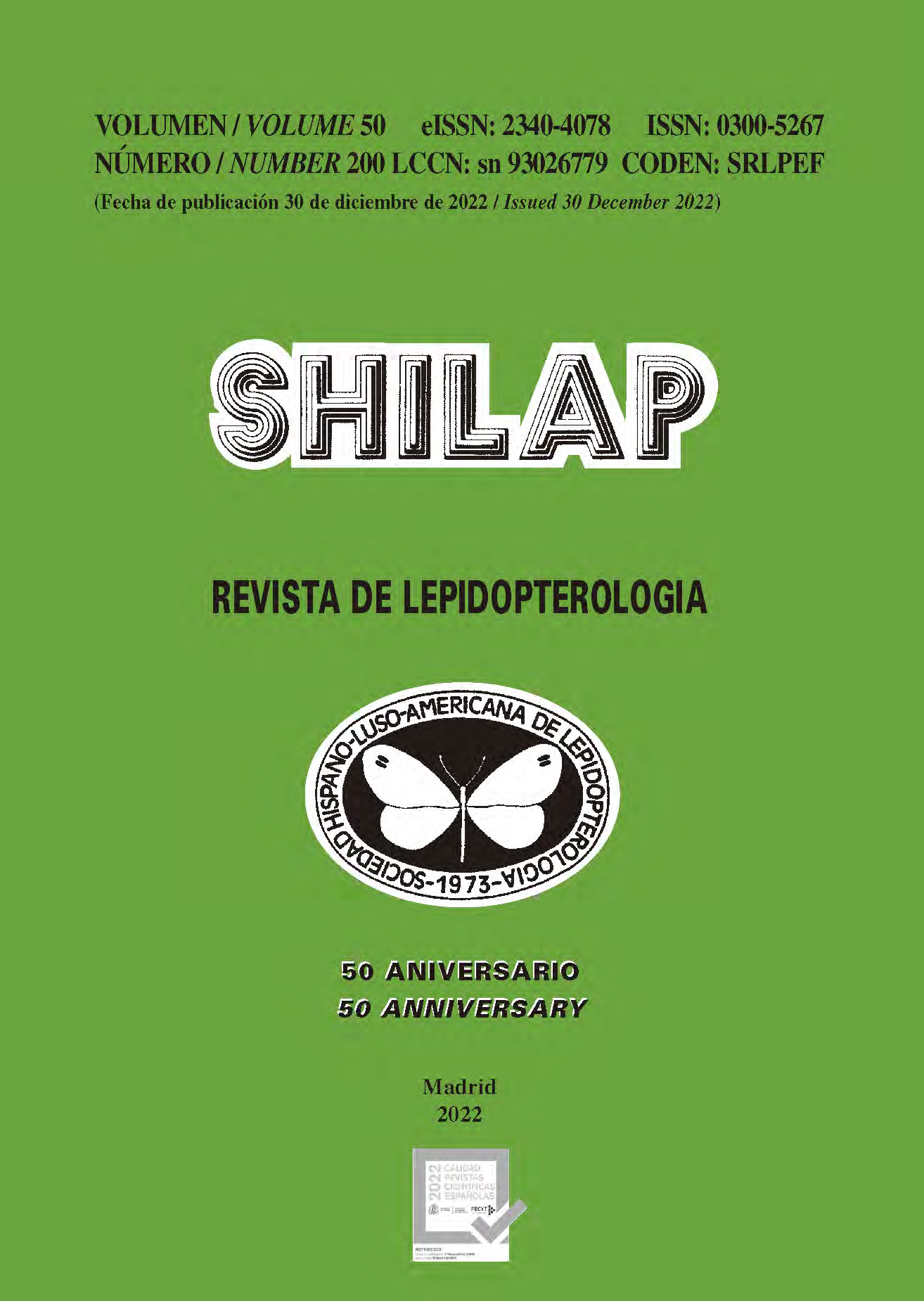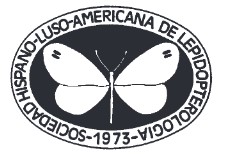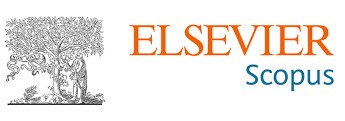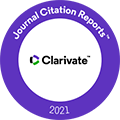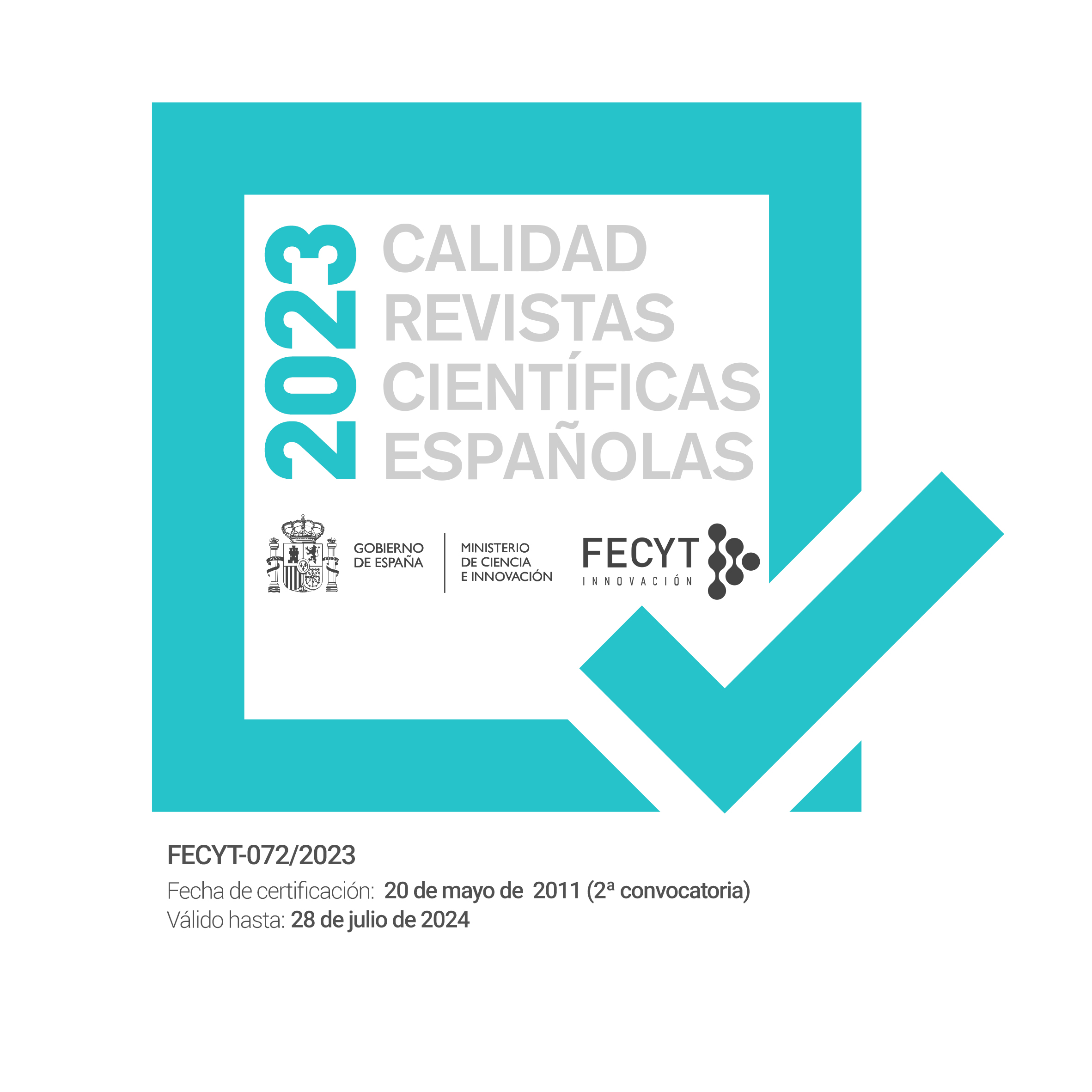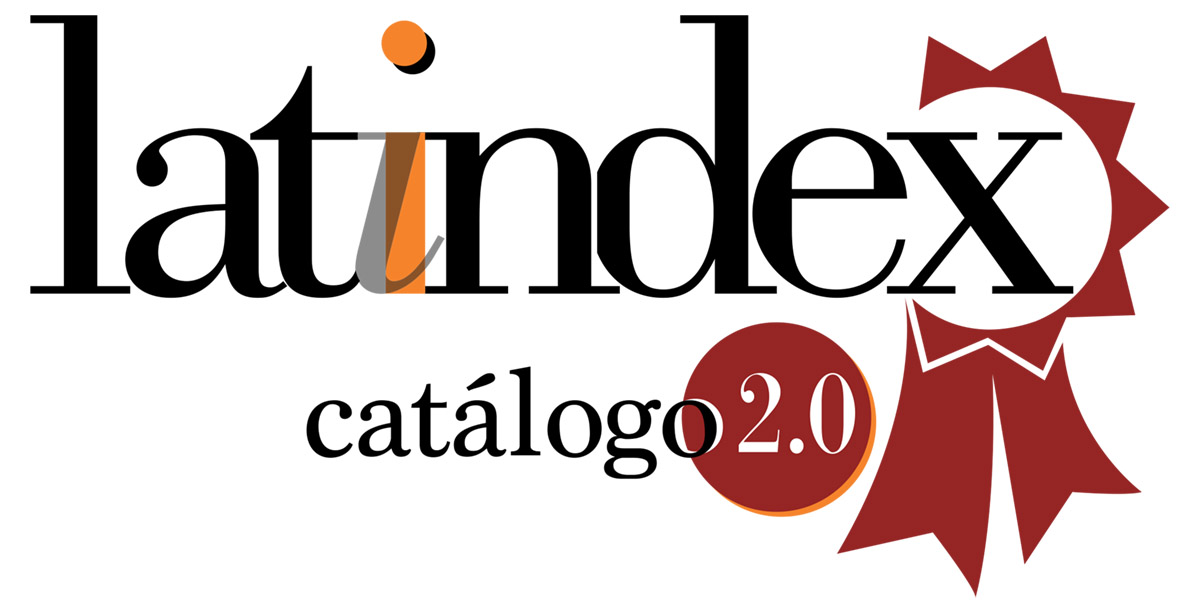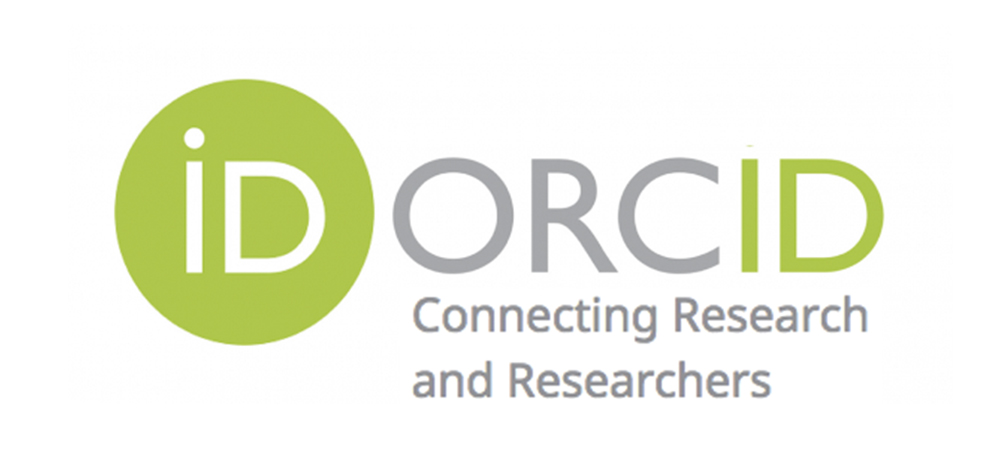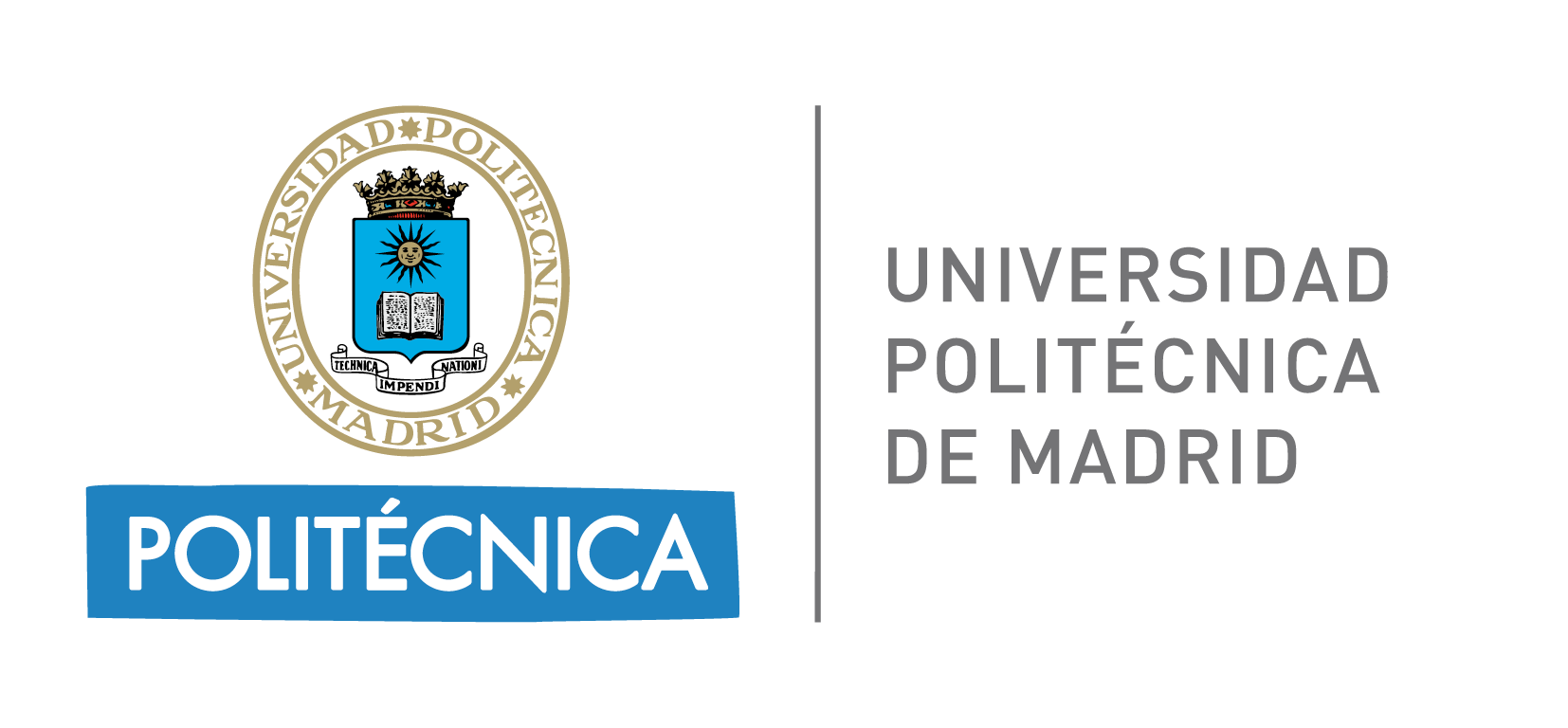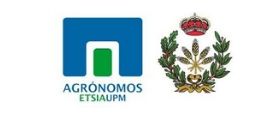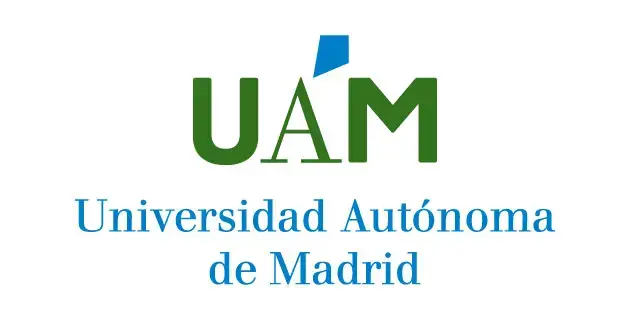First discovery of the natural egg parasitoid of Cydalima perspectalis (Walker, 1859) in Turkey with molecular methods (Lepidoptera: Crambidae
DOI:
https://doi.org/10.57065/shilap.253Parole chiave:
Lepidoptera, Crambidae, Cydalima perspectalis, Trichogramma evanescens, phylogeny, Internal transcribed spacer 2, Cytochrome oxidase subunit I, TurkeyAbstract
The genus Trichogramma Westwood, 1833 are important biological control agents of especially Lepidoptera pests in all around the world. These tiny wasps can’t be reliably identified owing to their small size and lack of definable morphological characters. ITS2 (Internal transcribed spacer 2) sequence-based identification has been performed successfully for years for parasitoids of the genus Trichogramma. The use of indigenous Trichogramma species against pests is very important for the success of biological control. Therefore, accurate and precise species identification of Trichogramma plays a key role in biological control programs. In the study, egg parasitoids were obtainedfrom parasitized egg masses of Cydalima perspectalis (Walker, 1859) collected in Hatay province of Turkey in May 2021. Trichogramma wasps were collected and only one species was determined by using both ribosomal and mitochondrial sequences. According to ribosomal and mitochondrial sequence results, all of the collected samples were determined to be Trichogramma evanescens Westwood, 1833. This is the first report of T. evanescens as egg parasitoid of C. perspectalis in the worldwide.
Downloads
Statistiche globali ℹ️
|
786
Visualizzazioni
|
400
Download
|
|
1186
Totale
|
|
Riferimenti bibliografici
Ak, K., Sari, Ö., Altar, K., & Yarar, H. (2021). Hatay ili rimrir alanlarında yeni bir zararlı, Cydalima perspectalis (Walker, 1859) (Lepidoptera: Crambidae). Artvin Çoruh Üniversitesi Orman Fakültesi Dergisi, 22(1),109-116. DOI: https://doi.org/10.17474/artvinofd.893012
Akinci, H. A., & Kurdoglu, O. (2019). Damage level of Cydalima perspectalis (Lepidoptera: Crambidae) on naturally growing and ornamental box populations in artvin, Turkey. Kastamonu Üniversitesi Orman Fakültesi Dergisi, 19(2),144-151.
Bonhof, M. J. (2000). The impact of predators on maize stem borers in coastal Kenya [Tesis]. Wageningen University.
Bird, S., Raper, C., Dale-Skey, N., & Salisbury, A. (2020). First records of two natural enemies of box tree moth, Cydalima perspectalis (Lepidoptera: Crambidae), in Britain. The British Journal of Entomology and Natural History, 33, 67-70.
Borba, R. S., Garcia, M. S., Kovaleski, A., Oliveira, A. C., Zimmer, P. D., Branco, J. S. C., & Malonen. G. (2005). Genetic dissimilarity of lines of Trichogramma Westwood (Hymenoptera: Trichogrammatidae) through ISSR markers. Neotropical Entomology, 34, 565-569. DOI: https://doi.org/10.1590/S1519-566X2005000400005
Borghuis, A, Pinto, J. D., Platner, G. R., & Stouthamer, R. (2004). Partial cytochrome oxidase II sequences distinguish the sibling species Trichogramma minutum Riley and Trichogramma platneri Nagarkatti. Biological Control, 30, 90-94. DOI: https://doi.org/10.1016/j.biocontrol.2003.09.015
CABI (2021). Invasive Species Compendium. https://www.cabi.org/isc/datasheet/118433
Can Cengiz, F., Ularlı, B., Kaya, K., & Moriniere, J. (2016). First of the egg parasitoids of Chilo partellus (Swinhoe) (Lepidoptera: Crambidae) in Turkey using DNA barcoding. Turkish Journal of Entomology, 40(2), 125-131. DOI: https://doi.org/10.16970/ted.80849
Correa, M. C. G., Palero, F., Dubreuil, N., Etienne, L., Hulak, M., Tison, G., Warot, S., Crochard, D., Ris, N., & Kreiter, P. (2016). Molecular characterization of parasitoids from armoredscales infesting citrus orchards in Corsica, France. Biological Control, 61(6), 639-647. DOI: https://doi.org/10.1007/s10526-016-9752-1
Çalırkan-Keçe, A. F., Ularlı, B. T., & Ulusoy, M. R. (2020). Mealybugs (Hemiptera: Pseudococcidae) on ornamental plants in Eastern Mediterranean Region, Turkey. Acta Horticulture. XXX. IHC - Proceedings II International Symposium on Innovative Plant Protection in Horticulture: 221-230. DOI: https://doi.org/10.17660/ActaHortic.2020.1269.30
EPPO (2019). Global Database: Reporting Service no. 06-2019. Num. Article: 2019/118, Update on the Situation of Cydalima perspectalis in the EPPO Region. https://gd.eppo.int/reporting/article-65482019
Ercan, F. S., Oztemiz, S., Tuncbilek, A. S., & Stouthamer, R. (2011). Sequence analysis of the ribosomal DNA ITS2 region in two Trichogramma species (Hymenoptera: Trichogrammatidae). Archives of Biological Sciences, 63(4), 949-954. DOI: https://doi.org/10.2298/ABS1104949E
Ercan, F. S., Oztemiz, S., & Tuncbilek, A. (2013). Mitochondrial and ribosomal DNA sequence analysis for discrimination of Trichogramma euproctidis Girault and Trichogramma brassicae Bezdenko (Hymenoptera: Trichogrammatidae). Turkish Journal of Entomology, 37(2), 195-201.
Hadded, K., Kalaentzis, K., & Demetriou, J. (2020). On track to becoming a cosmopolitan invasive species: First record of the box tree moth Cydalima perspectalis (Lepidoptera: Crambidae) in the African continent. Entomologia Hellenica, 29(2), 27-32. DOI: https://doi.org/10.12681/eh.23483
Hampson, G. F. (1896). The Fauna of British India, including Ceylon and Burma (Vol. 4). Taylor & Francis.
Hassan, S. A. (1995). Introduction to the “Effectiviness and Assessment” session. Les Colloq del'NRA, 73, 107-111.
Hebert,P. D. N, Cywinska, A., Ball, S. L., & Dewaard, J. R. (2003). Biological identifications through DNA barcodes. Proceedings of the Royal Society of London: Biological Sciences, 270(1512), 313-321. DOI: https://doi.org/10.1098/rspb.2002.2218
Hizal, E., Kose, M., Yesil, C., & Kaynar, D. (2012). The new pest Cydalima perspectalis (Walker, 1859) (Lepidoptera: Crambidae) in Turkey. Journal of Animal and Veterinary Advances, 11(3), 400- 403. DOI: https://doi.org/10.3923/javaa.2012.400.403
Inoue, H. (1982a). Pyralidae. In H. Inoue, S. Sugi, H. Kuroko, S. Moriuti, A. Kawabe & M. Owada. Moths of Japan (Vol. 1). Kodansha.
Inoue, H. (1982b). Pyralidae. In H. Inoue, S. Sugi, H. Kuroko, S. Moriuti, A. Kawabe & M. Owada. Moths of Japan (Vol. 2). Kodansha.
Kaygin, A. T. & Tardeler, C. (2019). Cydalima perspectalis (Walker) (Lepidoptera: Crambidae, Spilomelinae)’ in Türkiye’ de Cografi Yayılısı, Yarsam Döngüsü Ve Zararı. Bartın Orman Fakültesi Dergisi, 21(3), 833-847. DOI: https://doi.org/10.24011/barofd.578294
Kirpichnikova, V. A. (2005). Pyralidae. In P. A. Lehr. Key to the insects of Russian Far East. Trichoptera and Lepidoptera (Vol. 5, pp. 526-539). Dalnauka.
Marianelli, L., Iovinella, I., Strangi, A., Madonni, L., Efetov, K. A., Tarmann, G. M., Raiola, V., Baruzzo, F., Sabbatini, G. P., & Roversi, P. F. (2020). First record of the pest Artona (Fuscartona) martini Efetov, 1997 (Lepidoptera, Zygaenidae, Procridinae, Artonini) in European territory. Redia, 103, 3-7. https://doi.org/10.19263/REDIA-103.20.01 DOI: https://doi.org/10.19263/REDIA-103.20.01
Midega, C. A. O., Ogol, C. K. P. O., & Overholt, W. A. (2004). Effect of agroecosystem diversity on natural enemies of maize stemborers in coastal Kenya. International Journal of Tropical Insect Science, 4(4), 280-286. DOI: https://doi.org/10.1079/IJT200441
Mitchell, R., Chitanava, S., Dbar, R., Kramarets, V., Lehtijrvi, A., Matchutadze, I., Mamadashvili, G., Matsiakh, I., Nacambo, S., Papazova-Anakieva, I., Sathyapala, S., Tuniyev, B., Vétek, G., Zukhbaia, M., & Kenis, M. (2018). Identifying the ecological and societal consequences of a decline in Buxus forests in Europe and the Caucasus. Biological Invasions, 20, 3605-3620. DOI: https://doi.org/10.1007/s10530-018-1799-8
Nagarkatti, S., & Nagaraja, H. (2009). Redescriptions of some known species of Trichogramma showing the importance of the male genitalia as a diagnostic character. Bulletin of Entomological Research, 61, 13-31. DOI: https://doi.org/10.1017/S0007485300057412
Park, I. K. (2008). Ecological characteristic of Glyphodes perspectalis. Korean Journal of Applied Entomology, 47, 299-301. DOI: https://doi.org/10.5656/KSAE.2008.47.3.299
Pinto, J. D., Velten, R. K., Platner, G. R., & Oatman, E. R. (1989). Phenotypic plasticity and taxonomic characters in Trichogramma (Hymenoptera: Trichogrammatidae). Annals of the Entomological Society of America, 82, 414-425. DOI: https://doi.org/10.1093/aesa/82.4.414
Pinto, J. D., Platner,G. R., & Stouthamer, R. (2003). The systematics of the Trichogramma minutum complex (Hymenoptera: Trichogrammatidae), a group of important North American biological control agents: the evidence from reproductive compatibility and allozymes. Biological Control, 27, 167-180. DOI: https://doi.org/10.1016/S1049-9644(02)00190-1
Ratnasingham, S., & Hebert, P. D. (2007). BOLD: The barcode of life data systems. Molecular Ecology Notes, 7, 355-364. DOI: https://doi.org/10.1111/j.1471-8286.2007.01678.x
Rugman-Jones, P. F., Wharton, R., Noort, T., & Stouthamer, R. (2009). Molecular differentiation of the Psyttalia concolor (Szépligeti) species complex (Hymenoptera: Braconidae) associated with olive fly, Bactrocera oleae (Rossi) (Diptera: Tephritidae), in Africa. Biological Control, 49, 17-26. DOI: https://doi.org/10.1016/j.biocontrol.2008.12.005
Sari, T., & Çelikel, F. G. (2019). Türkiye’nin Rimrirleri (Buxus sempervirens ve Buxus balearica) ve Mevcut Tehditler. I. International Ornamental Plants Congress - VII. Süs Bitkileri Kongresi, 9-11 Ekim 2019, Bursa.
Stouthamer, R., Hu, J., Van Kan, F. J. P. M., Platner, G. R., & Pinto, J. D. (1999). The utility of internally transcribed spacer 2 DNA sequences of the nuclear ribosomal gene for distinguishing sibling species of Trichogramma. Biological Control, 43, 421-440. DOI: https://doi.org/10.1023/A:1009937108715
Stouthamer, R., Gai, Y., Koopmanschap, A. B., Platnerm, G. R., & Pinto, J. D. (2000). ITS-2 sequences do not differ for the closely related species Trichogramma minutum and T. platneri. Entomologia Experimentalis et Applicata, 95, 105-111. DOI: https://doi.org/10.1046/j.1570-7458.2000.00647.x
Sumer, F., Tuncbilek, A. S., Oztemiz, S., Pintureau, B., Rugman-Jones, P. F., & Stouthamer, R. (2009). A molecular key to the common species of Trichogramma of the Mediterranean region. Biological Control, 54, 617-624. DOI: https://doi.org/10.1007/s10526-009-9219-8
Symmes, H. (1984). Native stands of boxwood in modern Turkey. The Boxwood Bulletin. Boyce, 23(4), 76-79.
Thiruvengadam, V., More, R. P., Baskar, R., Jalali, S. K., Lalitha, Y., & Ballal, C. R. (2016). Differentiation of some indigenous and exotic trichogrammatids (Hymenoptera: Trichogrammatidae) from India based on Internal transcribed spacer-2 and cytochrome oxidase-I markers and their phylogenetic relationship. Biological Control, 101, 130-137. DOI: https://doi.org/10.1016/j.biocontrol.2016.07.005
Van Lenteren, J. C., & Woets, J. (1988). Biological and integrated pest control in greenhouses. Annual Review of Entomology, 33(1), 239-269. DOI: https://doi.org/10.1146/annurev.en.33.010188.001323
Van Der Straten, M. J., & Muus, T. S. (2010). The box tree pyralid (Glyphodes perspectalis (Walker 1859), Lepidoptera: Crambidae); an invasive alien moth ruining box trees. Proceedings of the Netherlands Entomological Society Meeting, 21, 107-111.
Venkatesan, T., Reetha, B., Jalali, S. K., Lalitha, Y., Ballal, C. R., Ravi, P. M., & Verghese, A. (2015). Molecular identification of egg parasitoid, Trichogramma species of India using COI and ITS-II regions and their phylogenetic relationships. Genome, 56(5), 291-29.
Wan, H., Haye, T., Kenis, M., Nacambo, S., Xu, H., Zhang, F., & Li, H. (2014). Biology and natural enemies of Cydalima perspectalis in Asia: Is there biological control potential in Europe? The Journal of Applied Entomology, 138, 715-722. DOI: https://doi.org/10.1111/jen.12132
Zimmermann, O., & Wuhrer, B. (2010). Initial investigations on the ability of the indigenous larval parasitoid Bracon brevicornis to control the Box tree pyralid Diaphania perspectalis in Germany. DGaaE Nachrichten, 24, 25-26.
##submission.downloads##
Pubblicato
Come citare
Fascicolo
Sezione
Licenza
Copyright (c) 2022 Feza Can, Fahriye Ercan, Basak Ulasli

TQuesto lavoro è fornito con la licenza Creative Commons Attribuzione 4.0 Internazionale.
L'autore mantiene i suoi diritti di marchio e di brevetto su qualsiasi processo o procedura contenuta nell'articolo.
L'autore conserva il diritto di condividere, distribuire, eseguire e comunicare pubblicamente l'articolo pubblicato su SHILAP Revista de lepidopterología, con il riconoscimento iniziale della sua pubblicazione su SHILAP Revista de lepidopterología.
L'autore conserva il diritto di pubblicare successivamente il suo lavoro, dall'utilizzo dell'articolo alla pubblicazione in un libro, a condizione che ne indichi la pubblicazione iniziale su SHILAP Revista de lepidopterología.
Ogni invio a SHILAP Revista de lepidopterología deve essere accompagnato dall'accettazione del copyright e dal riconoscimento della paternità. Accettandoli, gli autori mantengono il copyright del loro lavoro e accettano che l'articolo, se accettato per la pubblicazione da SHILAP Revista de lepidopterología, sarà concesso in licenza d'uso e distribuzione con licenza "Creative Commons Attribuzione 4.0 Internazionale" (CC BY 4.0), che consente a terzi di condividere e adattare il contenuto per qualsiasi scopo dando adeguato credito all'opera originale.
È possibile consultare la versione informativa e il testo legale testo legale della licenza qui. L'indicazione della Licenza CC BY 4.0 deve essere esplicitamente indicata in questo modo quando necessario.
A partire dal 2022, il contenuto della versione cartacea e digitale è concesso in licenza d'uso e distribuzione "Creative Commons Attribuzione 4.0 Internazionale" (CC BY 4.0), che consente a terzi di condividere e adattare il contenuto per qualsiasi scopo dando adeguato credito all'opera originale.
I contenuti precedenti della rivista sono stati pubblicati con una licenza di copyright tradizionale; tuttavia, l'archivio è disponibile ad accesso libero.
Quando si utilizzano i contenuti di SHILAP Revista de lepidopterología pubblicati prima dell'anno 2022, comprese figure, tabelle o qualsiasi altro materiale in formato cartaceo o elettronico, gli autori degli articoli devono ottenere l'autorizzazione del titolare del copyright. Le responsabilità legali, finanziarie e penali a questo riguardo appartengono all'autore o agli autori.
In applicazione del Principio di Priorità del Codice Internazionale di Nomenclatura Zoologica, non è consentito depositare in archivi, siti web personali o simili, versioni diverse da quella pubblicata dall'editore.
